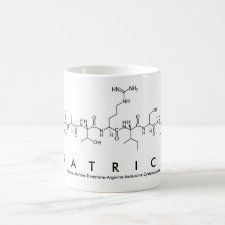
Authors: Croux D, Vangerven T, Broeders J, Boutsen J, Peeters M, Duchateau S, Cleij T, Deferme W, Wagner P, Thoelen R, De Ceuninck W
Article Title: Molecular imprinted polymer films on RFID tags: a first step towards disposable packaging sensors.
Publication date: 2013
Journal: physica status solidi (a)
Volume: 210
Issue: (5)
Page numbers: 938-944.
DOI: 10.1002/pssa.201200743
Abstract: Molecular imprinted polymer (MIP) sensors offer a high potential in the development of cheap small-scale disposable biomimetic sensors. Molecular imprinting leads to the formation of inert polymer particles with nanocavities, which can exhibit similar selectivity and specificity to target molecules as antibodies or enzymes. These sensors open up many possible applications in the field of mass-market consumer products such as food packaging sensors. One such application is the detection of histamine in spoiled fish, which causes scombroid poisoning, a common seafood poisoning. This contribution provides one possible solution for easing the use of these sensors in field applications. A screen-printed short-range wireless MIP-based biosensor based upon passive radio frequency identification (RFID) tags was developed as a proof of principle. Histamine molecules binding to an MIP recognition layer induce a dielectric change in the sensor capacitance, resulting in a resonance frequency shift that is transmitted by inductive coupling. This wireless sensor is capable of detecting histamine concentrations as low as 50 nM at a range of a few centimeters
Template and target information: histamine
Author keywords: biomimetic sensors, molecular imprinting, screen-printing, wireless sensors



Join the Society for Molecular Imprinting

New items RSS feed
Sign-up for e-mail updates:
Choose between receiving an occasional newsletter or more frequent e-mail alerts.
Click here to go to the sign-up page.
Is your name elemental or peptidic? Enter your name and find out by clicking either of the buttons below!
Other products you may like:
 MIPdatabase
MIPdatabase









